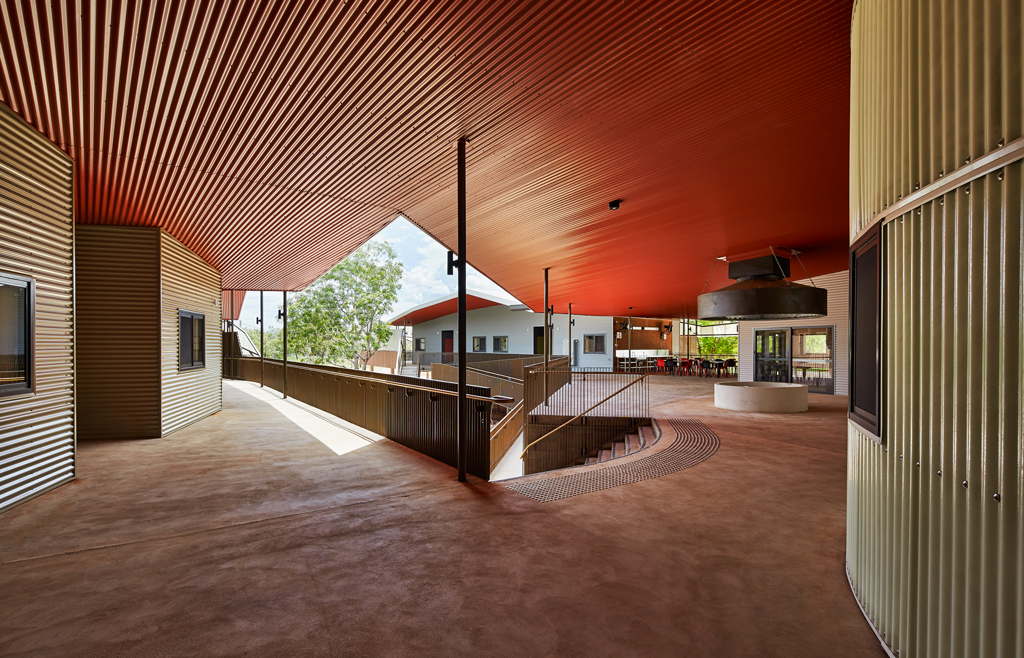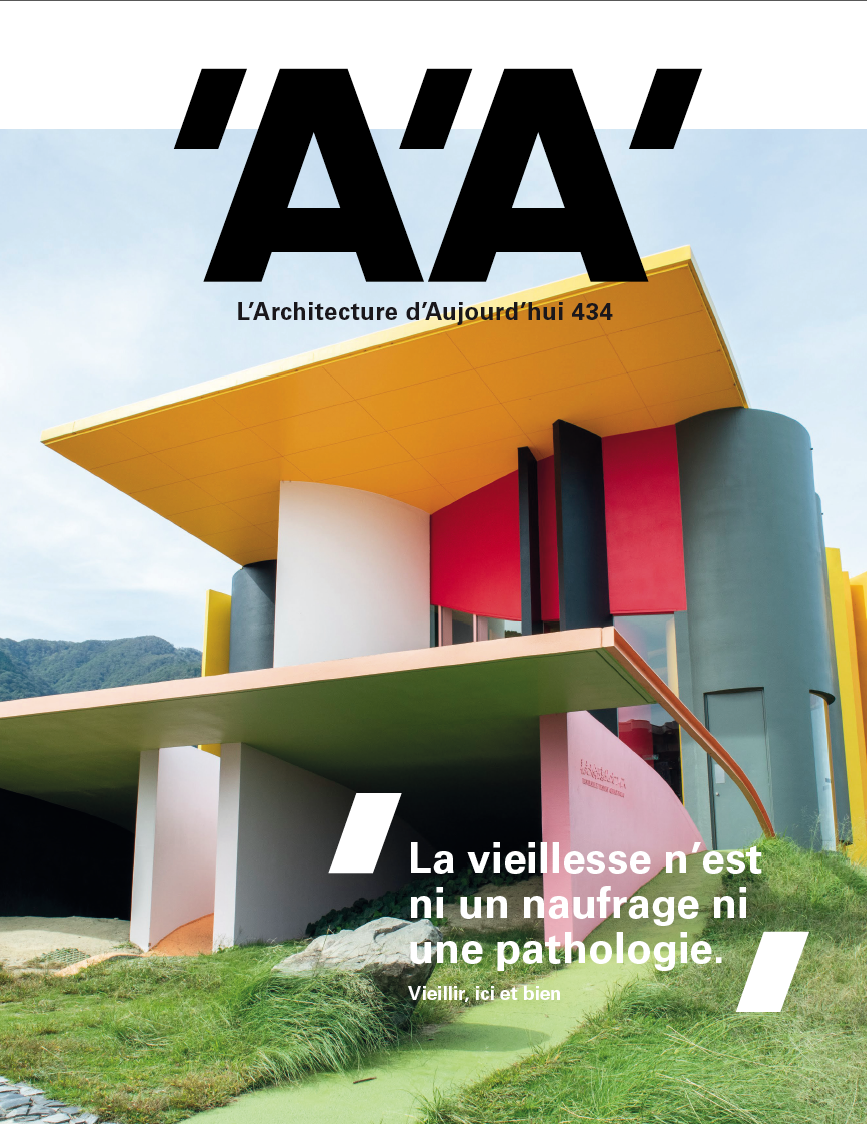Leaders culturels. Walumba Elders Center by Iredale Pedersen Hook Architects.
The Walumba Elders Centre was commissioned by the State of Western Australia, following a devastating water flood that destroyed Warmun, an Aboriginal settlement located 200km away south from the city of Kununurra.
For AA, Adrian Iredale -co-founder of Iredale Pedersen Hook Architects who was in charge of the project- highlights what can be learned from ancestral cultures in order to build for the elderly.
Interview by Yên Bui
L’Architecture d’Aujourd’hui: How did the project begin?
Adrian Iredale: The project was commissioned by the Department of Finance, Building Management and Works of the State of Western Australia following a devastating first in three hundred year flood that happened in March 2011. The flood led to the evacuation of 300 people who lived in town. Working directly with the Elders of the Gija community, an aboriginal people settled in this village, and the Home and Community Care staff, we designed a new home for them, based on their cultural and social needs, still complying with the requirements and range of services that an aged care centre built under the Commonwealth’s Flexible aged care provisions act has to offer. The site was selected to be close to the school and town centre to ensure that seniors are able to keep their role of educators and cultural leaders.
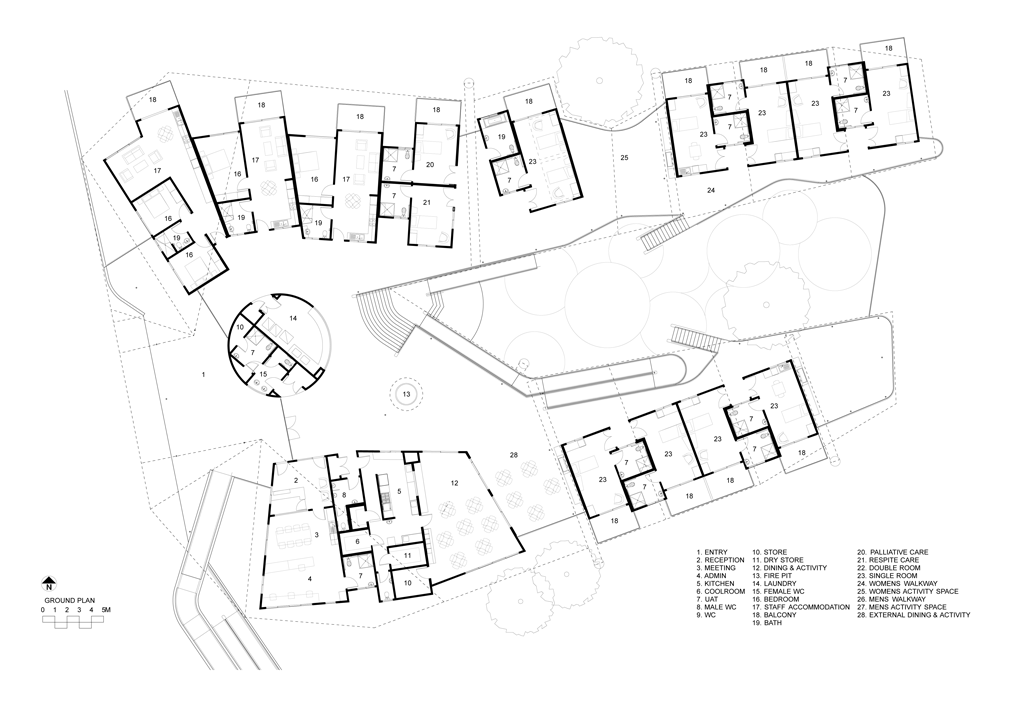
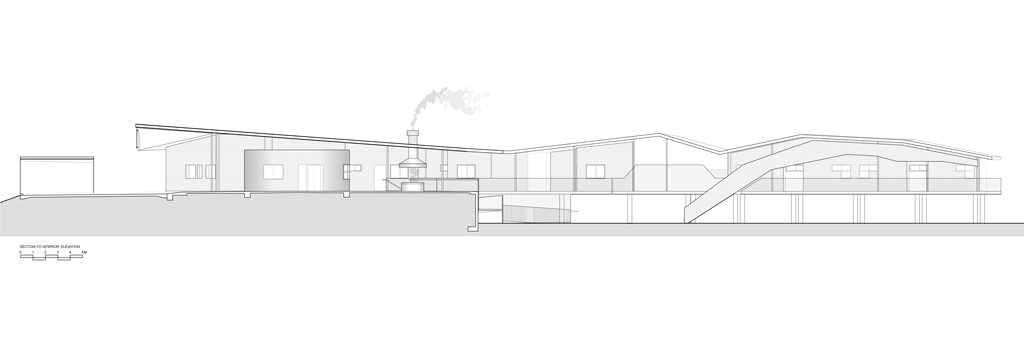
AA: What cultural factors did you take into account to design this building? Can you give examples of architectural features that participate in the exchanges between generations?
AI: This facility took different aspects of the Aboriginal culture into account, acknowledging reciprocal responsibilities between family members, trying to balance privacy and access to support, allowing an easy access to private and public outdoor living spaces, ensuring a connection with the general activities of the community, separating genders and anticipating funerary issues.
As seen in the photos, the design encourages interaction between generations thanks to outdoor shared spaces. Indeed, the setting strengthens co-mixing, with tactile and dynamic responses to climate such as the purging of water that becomes a play. Fireplaces and BBQs recall the ancestral role of Fire as a common meeting place between different generation and tribes, allowing the people to cook together and gather around so they can tell each other their stories. Also, separating men and women areas is a way to keep passing on cultural and gender specific knowledge.
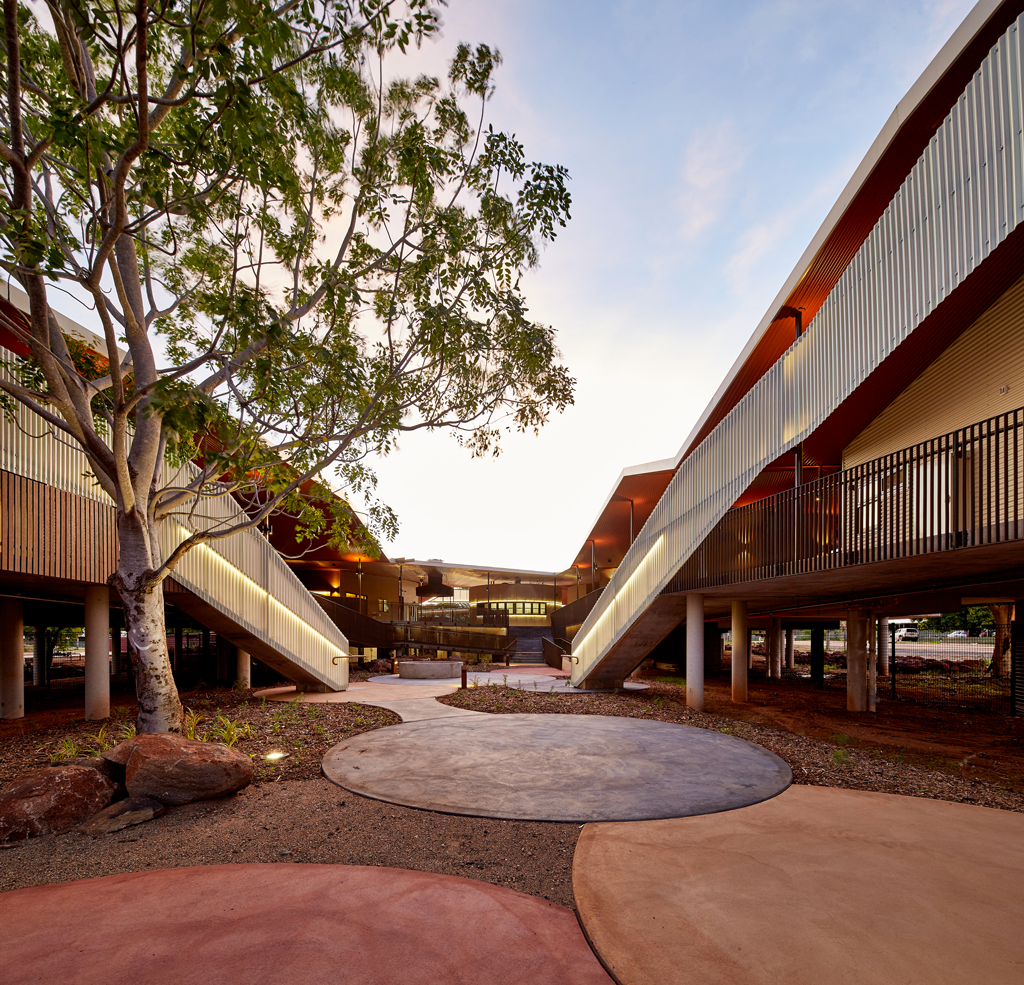
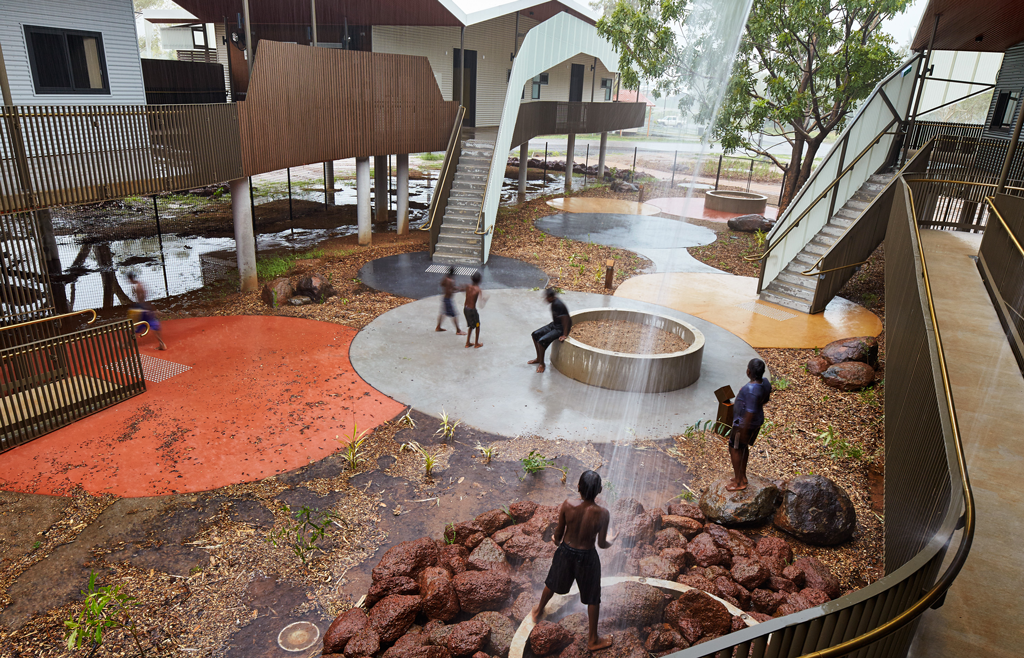
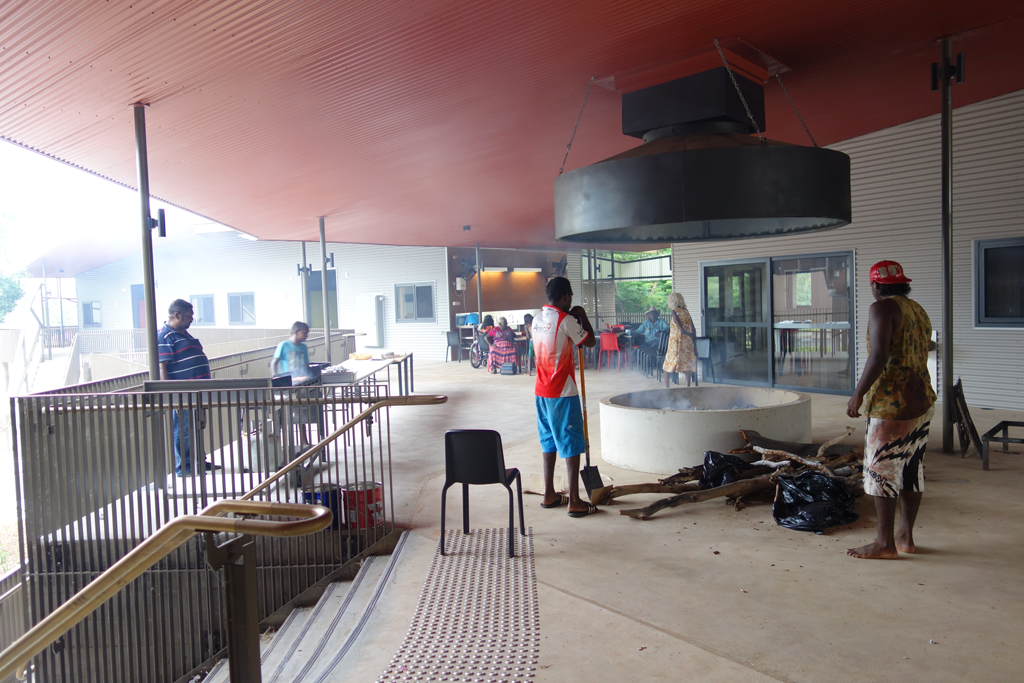
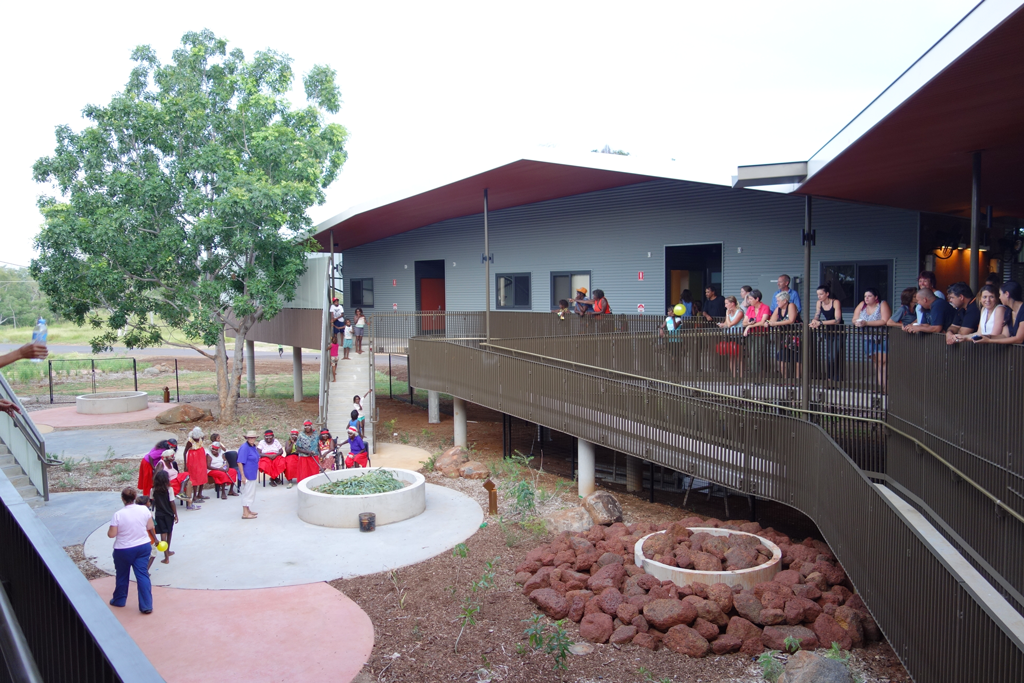
AA: What did you learn from this experience about architecture for the elderly?
AI: Inclusion is essential to mental and physical well being of our elderly. Too often we isolate them in the outskirts of towns and cities, abandoned and forgotten places. As an answer to isolation, we developed solutions that take mobility and tactility into account, in a recently completed project in Perth: SwanCare retirement village. Sensory facilities explored at Walumba Elders Centre resulted in direct and positive engagement from the inhabitants. When we transposed it to SwanCare Retirement Village, we expanded it to a community of 750 residents that openly invite their neighbours, families and friends. We wanted to create a variety of experiences, at different scales of spaces, so that either the individuals can have a quiet moment either groups can come together in an environment that engages their senses and make them feel safe.
—

